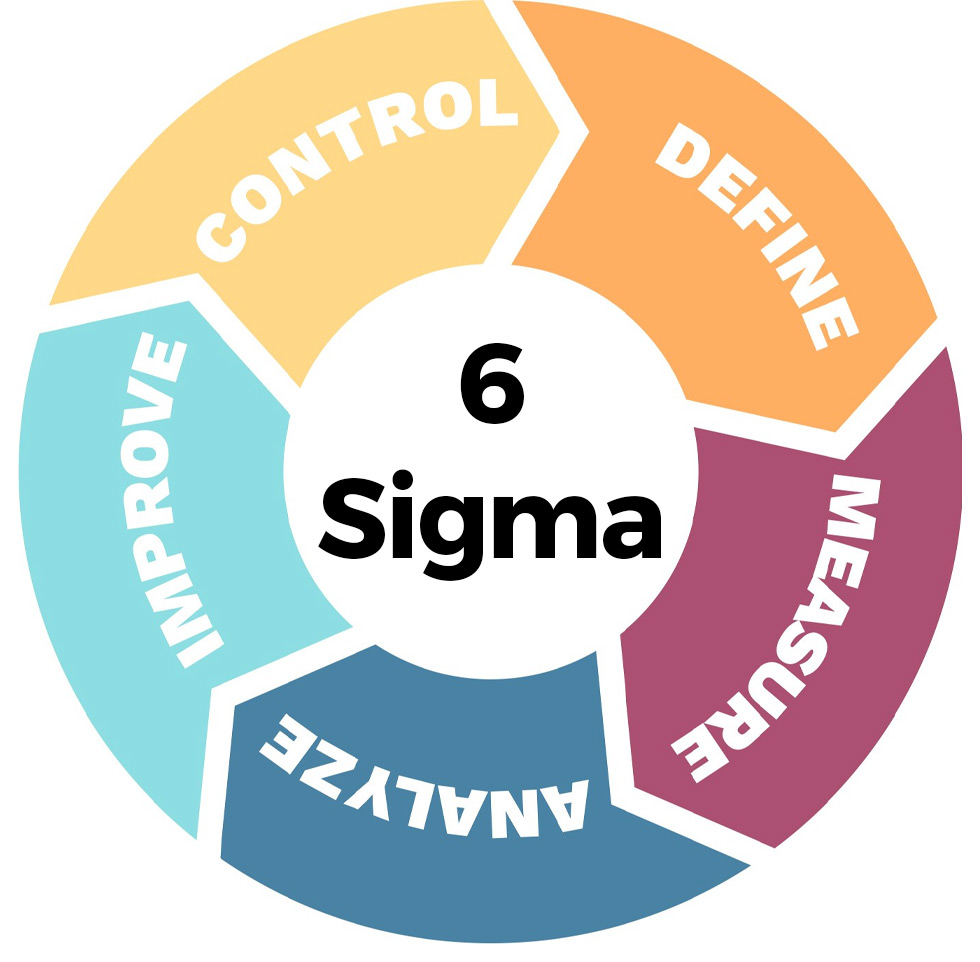Lean Six Sigma Curriculum for Montgomery High School Students of Alabama
Contact Us

Lean Six Sigma is a well-respected method for improving processes and allowing organizations and companies to seek continuous growth and improvement. It has been used worldwide and is known for its durability and proven results in manufacturing, as its ability to deliver tangible results with less effort and improve efficiency cannot be surpassed even by recent methods. Thus, companies have recognized its value and started to train their employees in Sigma, and many of them consider that LSS can be used beyond simple manufacturing. At Lean Six Sigma Curriculum for Montgomery High School Students of Alabama, our team knows how this methodology can help in your professional and personal lives and boost any company and industry today.
Let’s say you are a student, business owner, professional, or regular person interested in Six Sigma. When working with it and learning everything involved, you will start understanding how crucial it is to pay attention to the customer’s priorities and find the best way to achieve steady improvements throughout your processes and systems.
This is a popular approach that universities and colleges find valuable when students from high schools submit applications as LSS is more practical than based on books, which means it provides students with the practice aspect they often lack.
Businesses must look at it positively and try to get people certified in it. It reduces costs, increases customer satisfaction, decreases lead times, and opens up new opportunities for them after all.
It also helps to improve the efficiency of the training process and encourages the trainee to be more diligent.
Our LSS training is available to high school students who want to improve their chances of getting into college and finding more job opportunities.
We encourage students and professionals to apply for the Lean Six Sigma training and focus on one of the belts we offer. Now we are confident anyone will reap the benefits as this method is based on two individual methodologies: Lean and 6 Sigma.
Lean is all about creating value and increasing flow. Six Sigma is committed to ensuring processes remain stable and efficient after identifying and solving problems.
What does this approach mean for students? They are valuable to their own development and can offer a new perspective for future employers. However, they cannot apply the methodology to any situation or real-life project without being properly trained.
Before you decide to start learning it, let us first look at the basics.
The First Base Methodology of LSS
To understand the method, we must look back on history. Toyota developed Lean manufacturing in the late 1940s to reduce the non-value-adding activities and to ensure all types of waste were identified and eliminated.
Lean management’s core values include delivering from your customers’ perspective, eliminating workflow waste, and continually improving processes and cycles.
This idea suggests that employees should actively participate in organizational change to foster an environment of excellence.
Although it may seem simple, Lean has made great strides in improving and reducing waste. It allows companies and institutions to automate repetitive tasks and increases productivity.
Second Methodology: Six Sigma
On the other hand, Six Sigma is a process improvement technique that dates back to the 1980s. Motorola used Six Sigma to reduce variability and identify and reduce defects.
Six Sigma’s core values are:
- Concentrate on quantifiable financial results.
- Success is dependent on leadership and support from management.
- Data-based decisions are based on statistical data and not assumptions.
The DMAIC structure is used in this strategy. It helps to reduce waste and makes it easier to achieve the desired result. DMAIC stands to Define, Measure, Analyze, Improve, Control.
Six Sigma’s principles and phases are combined with Lean’s to create all the Lean Six Sigma phases and core values that we and everyone, the ones who learn it, have.

Lean Six Sigma Phases: Following DMAIC
LSS is not different from Six Sigma in the way it organizes the phases. It follows the same structure as Six Sigma, although some incorporate the Lean principles into the entire process.
We keep the DMAIC, which we break down right below.
- Define the problem from both a customer and business perspective. These questions will be required: What is the critical quality expectation of your customer? What is the problem being identified by stakeholders? Define the problem clearly both from a business perspective and from a broader perspective.
- Measure your current performance and answer the following question: Does it meet the quality standards set out in the previous phase? Each step in your flow should be identified and matched with the quality criteria.
- Analyze and use all data to identify the root cause of any problem identified in the initial phase. You can use Lean analytical tools like Value Stream Mapping, Just-In-Time, Pan Do-Check-Act, and Six Sigma to pinpoint the root cause.
- Improve processes. It is possible to solve the problem once the root cause of the problem has been identified. To do so, it is essential to work together and direct all your attention to the main elements of the process and cycle.
- Control what you have implemented. This phase will help you establish acceptable performance criteria and develop a plan to correct any deviations. This plan will help you keep your progress going and stop you from reverting to old ways.
These phases and structures make it clear that the method can be applied to companies and businesses. This is what it means for business professionals, students, and college students.
They can either learn LSS to fit the business’s needs or use the steps and structure of LSS in the course of their own projects and lives. It’s about understanding its purpose and how it can help companies and organizations in all industries grow and improve their performance.
Six Sigma Benefits: Why It’s Important to Incorporate It
We will be covering the two types of benefits that LSS can provide students to help them understand how they gain from it, but also make sure to add those most organizations can reap as well.
These benefits are often visible in the case of business professionals or companies that are concerned about training their employees, but students receive the same, if not greater, as they are inculcated early in their lives.
Here, we will split them into two groups:
Organizational Benefits.
- Less complicated processes. This will allow you to find inefficiencies and eliminate waste from your processes. It will also make it easier to manage your workflow. Because the process is straightforward, you will be more efficient and will make fewer mistakes.
- Improved predictability. Your workflow can be simplified and made more efficient to eliminate unnecessary activities. This will allow you to identify the root cause of any recurring problems faster, and it can make them more frequent.
- Increased profits/Decreased costs. A simplified delivery process will reduce waste and speed up delivery. This will increase your revenue potential. You can reduce costs by identifying and fixing the root causes of defects.
Personal Benefits.
- Analytical thinking. People are able to become more analytical by simplifying complicated issues into manageable tasks using the Six Sigma and Lean methods. This allows you to identify root causes and gives you a clear picture of what needs to be improved.
- Efficiency. People are more productive when they analyze their performance, identify root causes and propose solutions.
- Project management skills. Six Sigma managers must communicate with all levels within the organization, from strategy to operations. This will allow people to develop their project management skills and gain a better understanding of the business.

No matter what age, individuals can learn the skills needed to lead, collaborate, manage time, make decisions, and much more.
LSS assists them in acquiring tools that will aid them in other stages of their lives, such as work, education, and entrepreneurship. This applies to college students and business professionals, as well as high school students.
LSS certifications are useful for personal growth and credits. If you’re looking for work or college, these certifications could open up new opportunities.
Lean Six Sigma Curriculum Pros of Montgomery offers training and certifications for all three stages of your life: high school, college, and work. Let’s assume you have completed our yellow belt training, which focuses on LSS terminology and structure. Your organizational skills will be enhanced, and you will become more confident in your abilities. This will make you a valuable asset for colleges and companies.
The green belt is our second choice for certification or training. This gives you more options, including the possibility to become certified and trained at higher levels. You can request either our yellow belt training and certification or our green belt training, but for the latter, you must have completed the first one.
Leadership Excellence + Innovation Consulting
A method that encourages growth and improvement is essential. Leadership excellence is a key ingredient for ensuring that the method works well and produces better results than we imagined when it was first introduced.
At Lean Six Sigma Curriculum Pros of Montgomery, we can help you learn these skills and use them in the future. Leadership Excellence is a key addition because it prepares you to lead roles in any industry or for projects in college and university.
Leaders will have more control over the processes and be able to achieve better results with our training and course than with traditional methods.
These people can help plan for the future and growth of your business. You can be more than just a worker for your company if you learn how to manage yourself and your team.

Meanwhile, consulting in innovation is the act of giving advice and guidance to companies and organizations that are looking for new growth strategies. Individuals looking for guidance on how to implement and enhance their ideas are also welcome.
Innovation is about creating value and staying ahead of the curve with your ideas. While innovation consultants are often associated with technology, there are many other industries that can help to unlock business opportunities.
Companies can use our services to develop and implement new strategies to support their business goals. Individuals can also get assistance in developing or implementing new products and services to improve their current status.
Our role in this area does not depend on your industry or who you are.
For more information, please contact us. Our consultants will assist you in meeting your goals. Additional Lean Six Sigma certifications are also available. If you’re a professional or student, we can help, and don’t feel limited to accessing our services.

